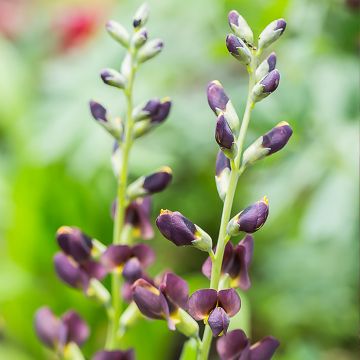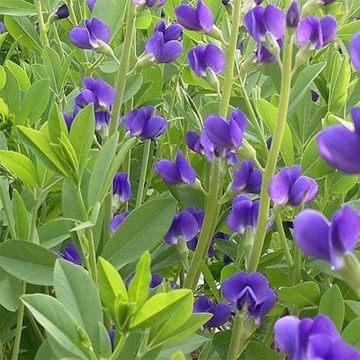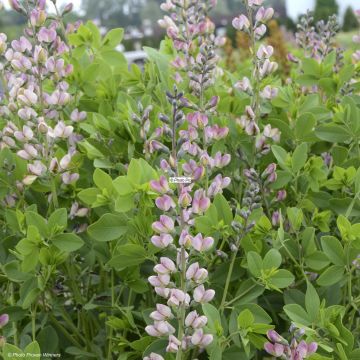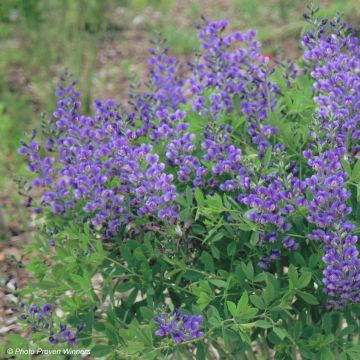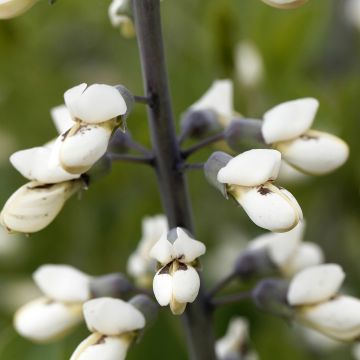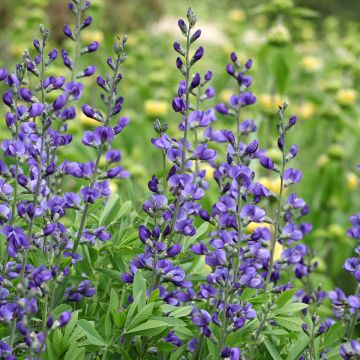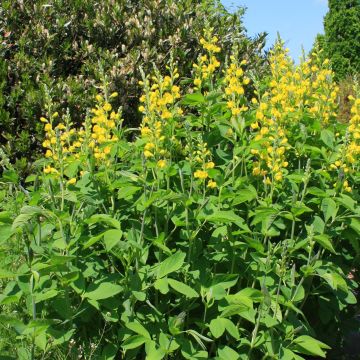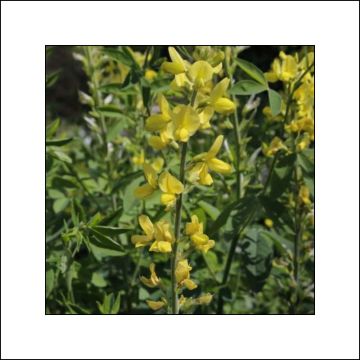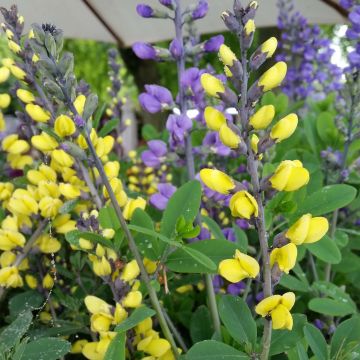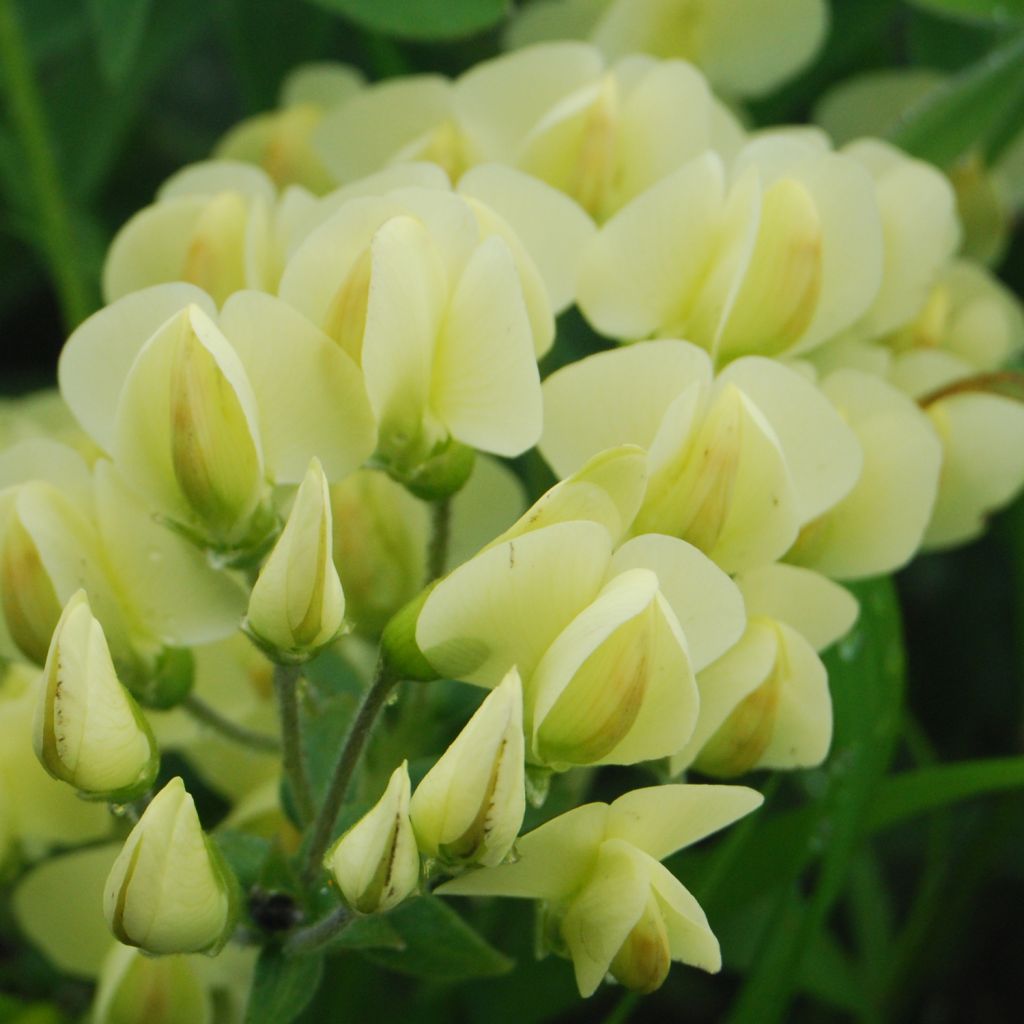

Baptisia bracteata
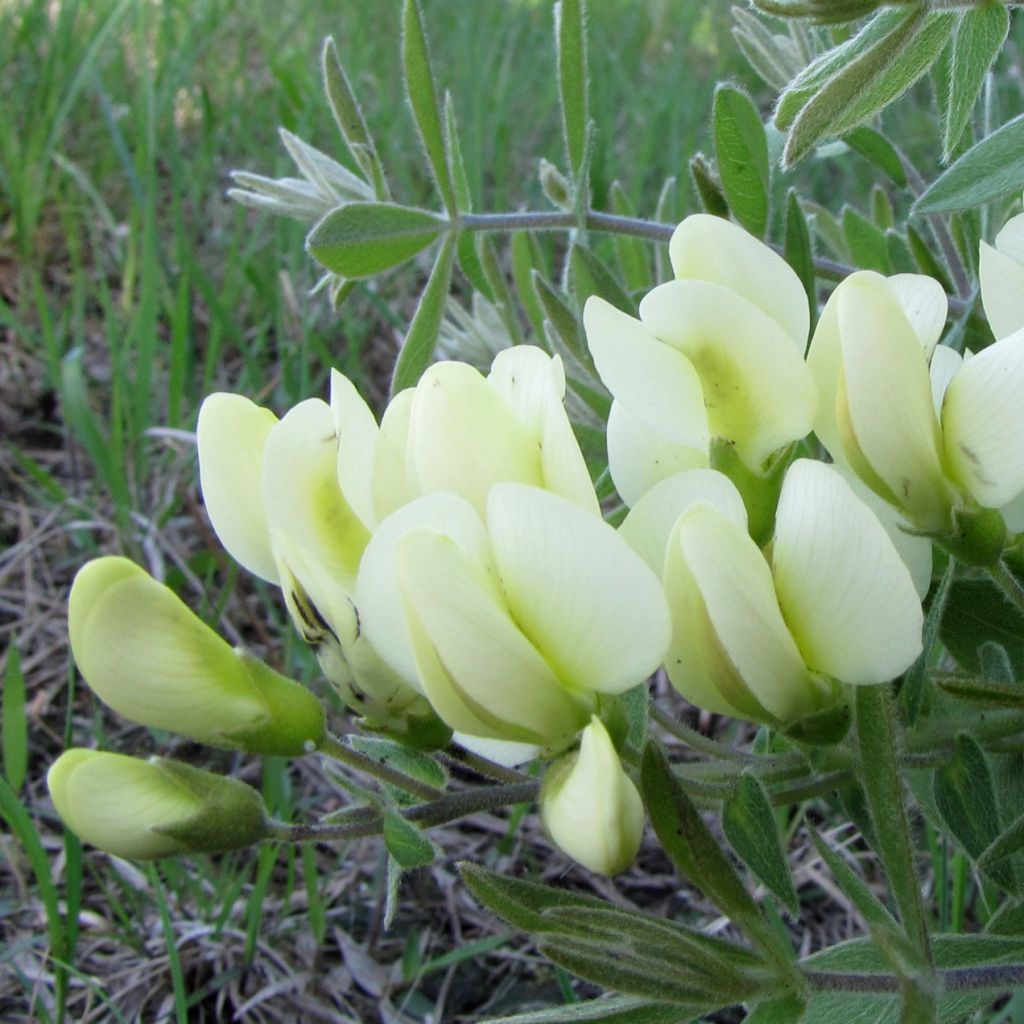

Baptisia bracteata
Baptisia bracteata
Baptisia bracteata
False lupin
Very small plant. I'm waiting for spring to see if it develops well.
pascale, 21/08/2024
This item cannot be shipped to the selected country
Delivery charge from €5.90
More information
Schedule delivery date,
and select date in basket
This plant carries a 12 months recovery warranty
More information
We guarantee the quality of our plants for a full growing cycle, and will replace at our expense any plant that fails to recover under normal climatic and planting conditions.
From €5.90 for pickup delivery and €6.90 for home delivery
Express home delivery from €8.90.
Does this plant fit my garden?
Set up your Plantfit profile →
Description
Baptisia bracteata, also known as False Lupine with Long Bracts or Wild Cream Indigo, is the first to bloom in the Illinois meadows where it is native. This botanical species will also charm with its flexible habit, its gracefully trailing stems under the weight of foliage and cream pea flowers arranged in long loose clusters. In the garden, its light foliage, with a soft grey-green colour, highlights many other plants. As a very perennial plant, this Baptisia proves to be very robust once well rooted.
Baptisia bracteata (Syn. B. leucophaea) belongs to the legume family, and is closely related to lupins. It is a perennial herbaceous plant native to the central and eastern United States. The robust stump is equipped with a powerful taproot system that extends deep into the soil to search for some moisture. Slow to establish, this plant eventually forms a bushy clump measuring about 70cm (28in) in all directions. The stump produces one or several cylindrical stems that are hairy and range in colour from light green to purple. These stems occasionally branch out, stand upright, then trail and spread widely. The deciduous foliage consists of alternate leaves divided into 3 leaflets. Each leaflet measures an average of 5cm (2in) long by 2.5cm (1in) in diameter. Their surface is hairy, with a greyish-green colour. Flowering, which is early for a Baptisia, occurs from late March to late May depending on the climate, and lasts about 3 weeks. At the tips of the stems, loose clusters of flowers measuring 7.5 to 20cm (3 to 8in) long form. These are spreading racemes that can be raised above the ground or even lie on the ground. Each papilionaceous flower, with a pedicel, turns towards the light. This flowering is visited by bumblebees and other pollinating insects. It gives way to pods that turn almost black when ripe. In winter, the plant is devoid of leaves, but its stems adorned with black pods are still charming.
This False Lupin is best planted in full sun, in a deep soil, preferably sandy-loamy, whether slightly acidic, neutral or even slightly alkaline. Baptisias are more perennial and much less demanding than their lupin cousins in terms of soil and moisture. They have very robust stumps that allow them to live as long as shrubs in our gardens. They just need time to establish themselves. This graceful Baptisia bracteata will find its place in a contemporary or romantic garden, a garden without watering, or in natural areas. It looks stunning alongside white or blue flowers, allowing for numerous combinations according to each gardener's taste. For example, it can be paired with roses, red, orange or blue shrub salvias, early-flowering ornamental garlics... It also pairs well with annual poppies or hybrid mulleins, which are also spectacular.
Report an error about the product description
Baptisia bracteata in pictures
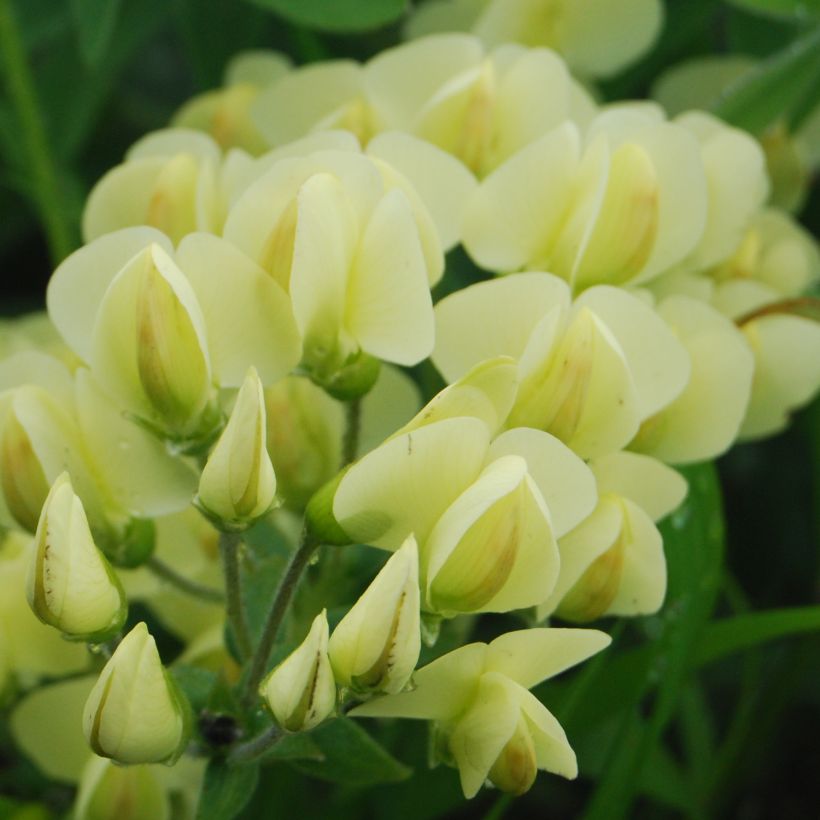

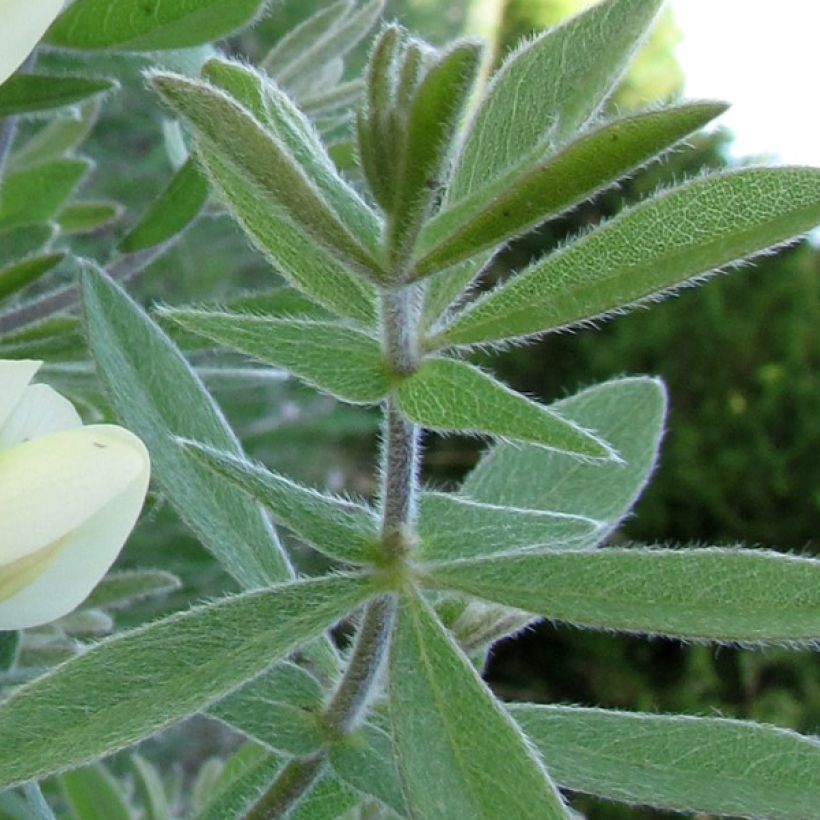

Flowering
Foliage
Plant habit
Safety measures
Botanical data
Baptisia
bracteata
Fabaceae
False lupin
North America
ingestion
Cette plante est toxique si elle est ingérée volontairement ou involontairement.
Ne la plantez pas là où de jeunes enfants peuvent évoluer, et lavez-vous les mains après l'avoir manipulée.
Pensez à conserver l'étiquette de la plante, à la photographier ou à noter son nom, afin de faciliter le travail des professionnels de santé.
Davantage d'informations sur https://plantes-risque.info
Other Baptisia
Planting and care
Growing Baptisia bracteata requires a bit of skill to succeed smoothly:
This tall and hardy perennial appreciates deep, light, and well-drained soils, sandy-loamy, which allow it to reach some moisture in depth. Once well-established, it tolerates summer drought. Limestone is tolerated without excess.
In the first year of cultivation, the plant seems to vegetate, which is normal. Young Baptisia plants have very slow growth, and their taproot is particularly fragile until it is deeply anchored in the soil. Make sure not to damage it during planting! Also, do not leave a young plant in its bucket for too long: the taproot could bend when reaching the bottom.
Possibly add a small handful of phosphate fertilizer (it stimulates root growth) that you will mix with the soil at the time of planting. Add 1/3 sand and 1/3 gravel to heavy soil to ensure good drainage, which is essential. Water moderately in the first year.
In the second or third year, the plant will be established, will not require any special care, and will be able to flower profusely for many years!
Attention, voles also seem to be fond of its fleshy roots...
Planting period
Intended location
Care
-
, onOrder confirmed
Reply from on Promesse de fleurs
Haven't found what you were looking for?
Hardiness is the lowest winter temperature a plant can endure without suffering serious damage or even dying. However, hardiness is affected by location (a sheltered area, such as a patio), protection (winter cover) and soil type (hardiness is improved by well-drained soil).

Photo Sharing Terms & Conditions
In order to encourage gardeners to interact and share their experiences, Promesse de fleurs offers various media enabling content to be uploaded onto its Site - in particular via the ‘Photo sharing’ module.
The User agrees to refrain from:
- Posting any content that is illegal, prejudicial, insulting, racist, inciteful to hatred, revisionist, contrary to public decency, that infringes on privacy or on the privacy rights of third parties, in particular the publicity rights of persons and goods, intellectual property rights, or the right to privacy.
- Submitting content on behalf of a third party;
- Impersonate the identity of a third party and/or publish any personal information about a third party;
In general, the User undertakes to refrain from any unethical behaviour.
All Content (in particular text, comments, files, images, photos, videos, creative works, etc.), which may be subject to property or intellectual property rights, image or other private rights, shall remain the property of the User, subject to the limited rights granted by the terms of the licence granted by Promesse de fleurs as stated below. Users are at liberty to publish or not to publish such Content on the Site, notably via the ‘Photo Sharing’ facility, and accept that this Content shall be made public and freely accessible, notably on the Internet.
Users further acknowledge, undertake to have ,and guarantee that they hold all necessary rights and permissions to publish such material on the Site, in particular with regard to the legislation in force pertaining to any privacy, property, intellectual property, image, or contractual rights, or rights of any other nature. By publishing such Content on the Site, Users acknowledge accepting full liability as publishers of the Content within the meaning of the law, and grant Promesse de fleurs, free of charge, an inclusive, worldwide licence for the said Content for the entire duration of its publication, including all reproduction, representation, up/downloading, displaying, performing, transmission, and storage rights.
Users also grant permission for their name to be linked to the Content and accept that this link may not always be made available.
By engaging in posting material, Users consent to their Content becoming automatically accessible on the Internet, in particular on other sites and/or blogs and/or web pages of the Promesse de fleurs site, including in particular social pages and the Promesse de fleurs catalogue.
Users may secure the removal of entrusted content free of charge by issuing a simple request via our contact form.
The flowering period indicated on our website applies to countries and regions located in USDA zone 8 (France, the United Kingdom, Ireland, the Netherlands, etc.)
It will vary according to where you live:
- In zones 9 to 10 (Italy, Spain, Greece, etc.), flowering will occur about 2 to 4 weeks earlier.
- In zones 6 to 7 (Germany, Poland, Slovenia, and lower mountainous regions), flowering will be delayed by 2 to 3 weeks.
- In zone 5 (Central Europe, Scandinavia), blooming will be delayed by 3 to 5 weeks.
In temperate climates, pruning of spring-flowering shrubs (forsythia, spireas, etc.) should be done just after flowering.
Pruning of summer-flowering shrubs (Indian Lilac, Perovskia, etc.) can be done in winter or spring.
In cold regions as well as with frost-sensitive plants, avoid pruning too early when severe frosts may still occur.
The planting period indicated on our website applies to countries and regions located in USDA zone 8 (France, United Kingdom, Ireland, Netherlands).
It will vary according to where you live:
- In Mediterranean zones (Marseille, Madrid, Milan, etc.), autumn and winter are the best planting periods.
- In continental zones (Strasbourg, Munich, Vienna, etc.), delay planting by 2 to 3 weeks in spring and bring it forward by 2 to 4 weeks in autumn.
- In mountainous regions (the Alps, Pyrenees, Carpathians, etc.), it is best to plant in late spring (May-June) or late summer (August-September).
The harvesting period indicated on our website applies to countries and regions in USDA zone 8 (France, England, Ireland, the Netherlands).
In colder areas (Scandinavia, Poland, Austria...) fruit and vegetable harvests are likely to be delayed by 3-4 weeks.
In warmer areas (Italy, Spain, Greece, etc.), harvesting will probably take place earlier, depending on weather conditions.
The sowing periods indicated on our website apply to countries and regions within USDA Zone 8 (France, UK, Ireland, Netherlands).
In colder areas (Scandinavia, Poland, Austria...), delay any outdoor sowing by 3-4 weeks, or sow under glass.
In warmer climes (Italy, Spain, Greece, etc.), bring outdoor sowing forward by a few weeks.


































